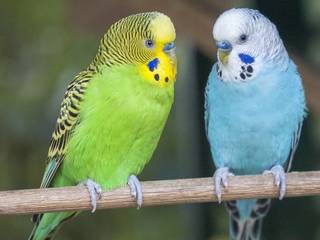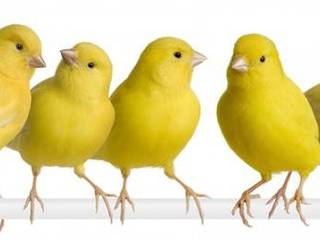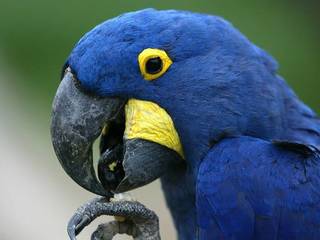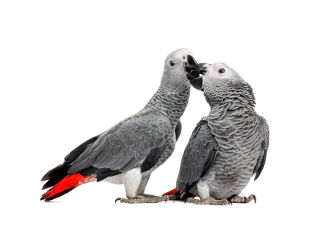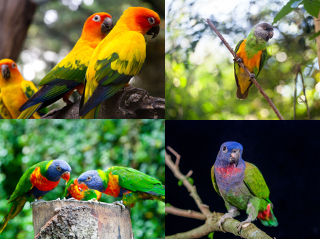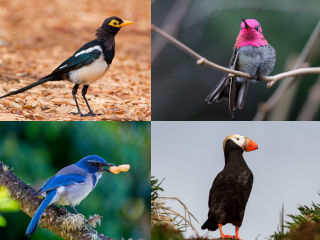The beautiful African Grey Parrots are classified as one of the smartest types of birds around. If you have an African Grey Parrot of your own, then you can easily see why this is so. They have big personalities and have the potential to lead long and fruitful lives.
You may have come to the idea that you want to breed your parrot and after looking at all the other African Grey parrots for sale, you realize you’re not really sure where to start. Breeding this type of bird can be easy but it will indeed take time, effort, and extra knowledge on the subject in order to have the successful outcome you want.
In this article, we will discuss the basic tips and knowledge that will lead you to find the best mate for your bird and how to lead them into a breeding period.
Finding the Right African Grey Parrots
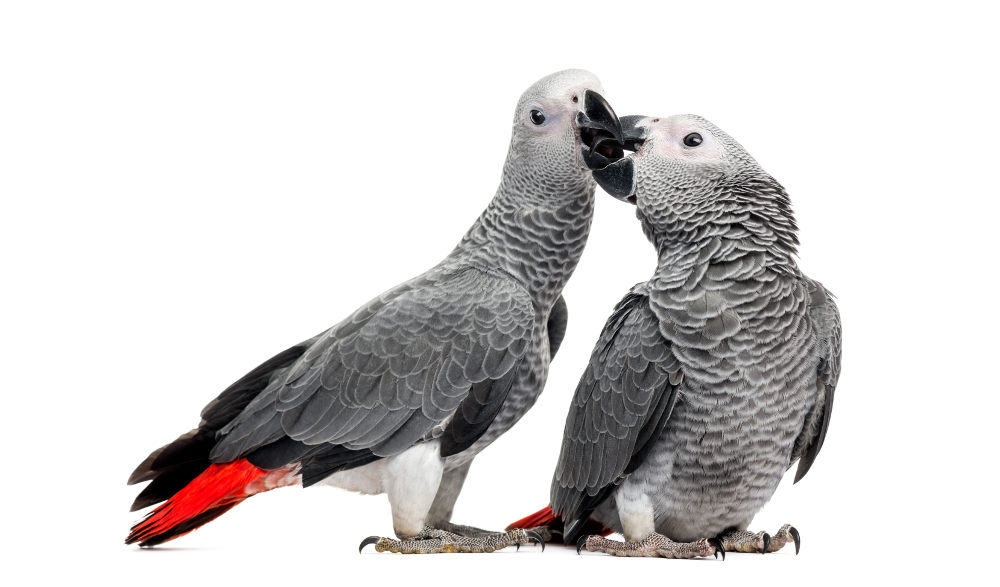
The first thing to do when planning to find a breeding mate for your African Grey is to find the right bird. Of course, you must have one parrot being a male and the other being a female. While the person selling the bird should be able to provide this information, it may be best to have a DNA test completed just to be sure.
When finding the right bird, remember that parrots need to be a certain age to properly breed or to know how to breed. African Greys are typically mature enough to breed at age 7-10 but should not breed any younger.
It is ok to breed a feral parrot with a tame parrot but note that it may be harder because the feral parrot will not feel as secure and may need more privacy.
Buy From a Reputable Seller
Aside from finding the right bird, finding the right seller is the tipping point on that part of the journey. Be careful not to fall for promises from everyone without proof that it is so. Some breeders may tell you that a pair of African Greys have been very well bonded for a long period of time but if the birds do not show signs of that then the breeder may be using that as a false selling point.
You can look for signs such as eating together, showing affection, and things of that matter. Many times, parrots will take years to form a special bond as such, but it is imperative to the mating process. If they aren’t properly bonded, they are likely not to breed with one another.
Look at the eyes of the birds that they are selling and if they are still black, the seller is trying to sell the birds at a young age. Adult African Greys should have eyes that have already turned yellow. Any reputable seller will know this and will follow this rule of thumb.
The birds must be old enough to breed in order to make this work.
Medical Examination
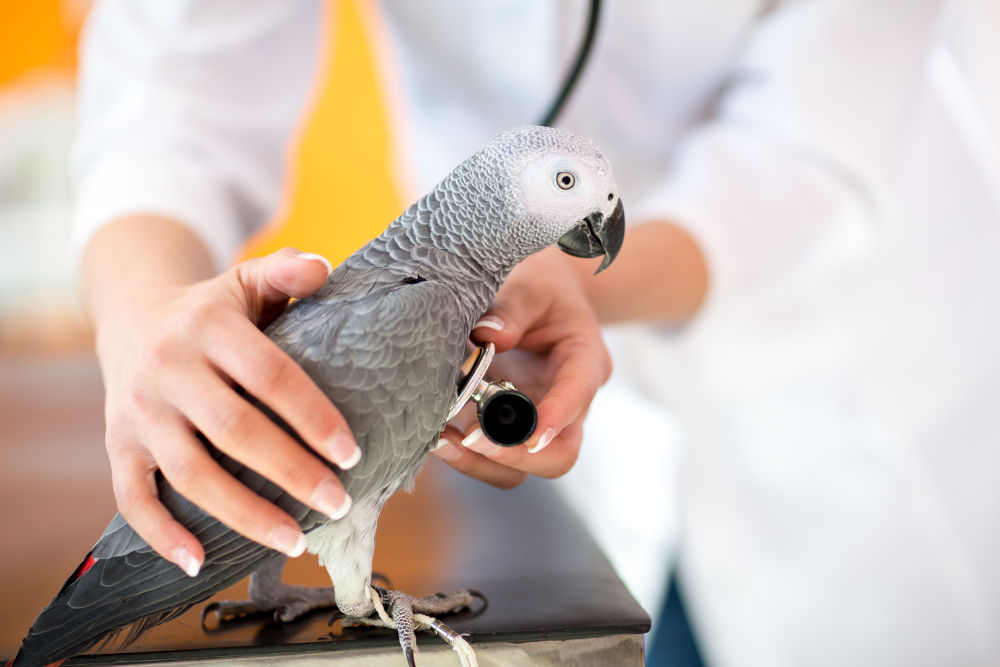
To be sure to have a smooth breeding cycle and healthy offspring, it is important that the parenting birds are in a solid healthy condition.
It is best to have a thorough medical examination on each mating bird before going any further with the breeding process. The African Grey requires regular checkups and preventative care to have a long, healthy life.
In doing so, you can be sure you have the healthiest pair of breeding mates and will ensure that their chicks are healthy as well.
Introduce the Love Birds
The next step in the breeding process is to introduce the two African Greys to one another. It isn’t logical to just throw the two in a cage together and hope for the best. That would result in a failed breeding.
You must first put them in a cage that is in a different area than where the mating will be taking place. This is the natural way of things in the wild and imitating it will make for an easier transition. Don’t worry if they show aggression toward each other, this is also natural in choosing the healthiest and strongest partner.
Once the two birds seem to be enjoying each other’s company, it may be time to move them to the breeding headquarters.
Nesting Set-Up
The African Grey parrot is very picky when it comes to its breeding and nesting set-up. They require lots of privacy and quietness. If you have other birds around, you will need to move them to a different location to provide the mates with more privacy.
If the room that they are in lets in too much noise from the surrounding rooms, the birds might not feel comfortable enough to mate. Therefore, it is best to put them in a room that nobody will be going in and out of and a room that doesn’t leak sound from other rooms nearby.
Placing a perch in the cage is suitable for breeding so that the female can stand on it during that time. Make sure that the perch is thick and sturdy so that she can easily hold herself still when the male goes above her. If she is not able to stay still the male bird may think that she is too weak and in turn, may not want to mate with her.
Most breeders say that an L-shaped nesting box is the best type of nesting area and should be a minimum of two-feet wide, three-feet high, and six-feet deep. If you have other male birds in the room, you must keep them far enough away from the mating male to keep them from enduring a competition.
Temperature and Humidity
The whole aspect of providing the proper breeding environment is to try to make the area feel as natural as being in the wild as possible. This means that the temperature and humidity must be adjusted accordingly.
Breeders say that a temperature between 77F and 82F is a suitable temp with the humidity being always roughly between 45-65.
Nutrition
African Grey Parrots typically thrive by eating seeds and you can purchase a type of seed that is formulated specifically to encourage breeding.
However, adding dried fruits and veggies to your bird’s diet can help add the nutritional value needed especially during this time. Giving the female bird boiled eggs or other foods that provide plenty of calcium will help her lay healthy eggs and will also help regain her energy.
Is Something Wrong?
Even the healthiest birds can end up with a disease or illness. It is good to know the signs to look for so that you can catch the issue early on before any breeding occurs or so that you may be able to resolve the issue. The signs to look for that we are going to discuss is also an indicator of issues in the chicks once they arrive as well.
The signs in an adult to look for include:
- • Lack of eating
- • Weight loss
- • Abnormal or lack of droppings
- • Fluffed or ratty-looking feathers
- • Weakness
- • Drooping wings
Some of the signs to look for in the chicks are the same as an adult but all the signs to look for include:
- • Constantly chirping (crying)
- • Not sleeping
- • No feeding response
- • Poor weight gain
- • Stunted growth
- • Abnormal wings
- • Lack of droppings
If you notice any of these or feel that something is wrong with the birds whether they are still babies or full grown, it is always safe to take them to the vet just to be sure.
Mating and Checking for Eggs
In the first breeding phase the couple may take 6-12 months to actually produce but once they get past this initial phase, the time they take to mate and lay eggs will decrease. The parrots will likely mate multiple times a day and it is best not to bother them too much.
Only check for eggs once a day at most and try to do so when you feed them. Take note that once the eggs begin to be closer to hatching, the parrots will tend to eat a lot more to prepare to care for their chicks.
Eggs and Chicks
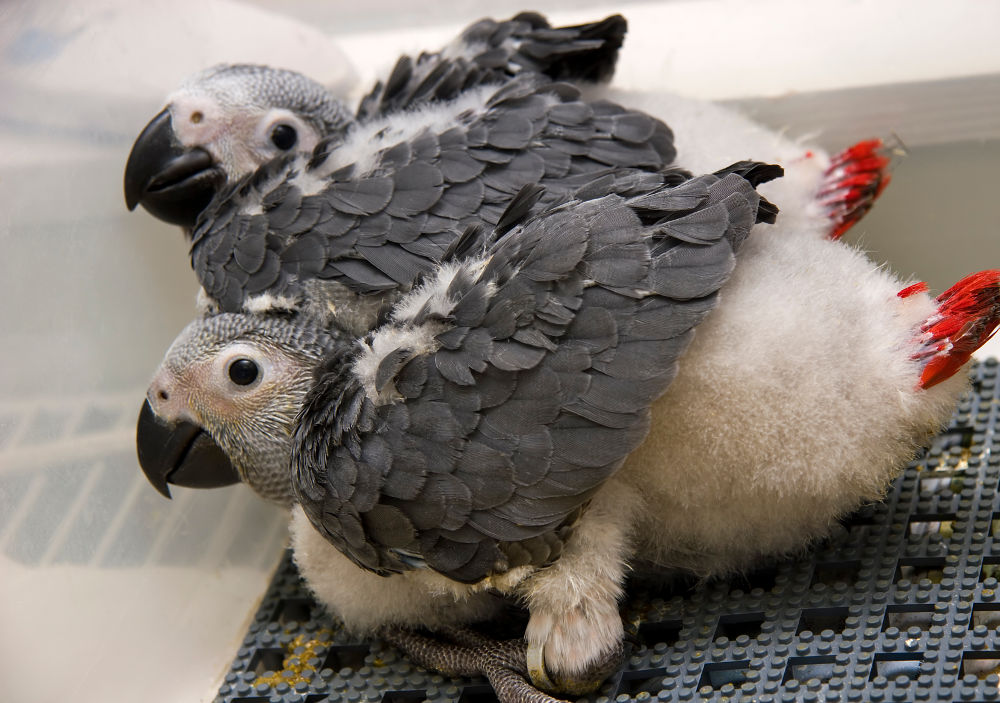
Parrots usually lay a clutch of 2-5 eggs and once they are laid, they take 28-30 days to actually hatch. If this is the first time that your birds have mated and laid eggs, you may want to incubate the eggs in an incubator. Otherwise, the female may show aggression and anxiety and end up destroying the eggs. This could turn into a habit in which she would do this every time that she has babies.
If the birds are experienced with the breeding process, it is safe to let them do what they do best and care for the eggs and chicks on their own.
Hand Feeding the Chicks
Hand feeding the baby chicks is recommended to only be done by experienced breeders and you should always consult with your veterinarian.
That being said, let’s discuss the proper ways to hand feed chicks if a dire circumstance arises and you must take action. The babies should be left with their parents at least until it is 3 weeks old. You must be sure to remove all the chicks together so that none are left behind. The parenting birds will be protective over their young and may try to show aggression when you try to remove the chicks.
It is best to use a scoop of some sort to pick up the chicks quickly and easily. Above all else, be sure to be gentle with them as they require smooth handling.
Fresh food should be prepared for each feeding. There are foods that are specifically formulated for hand-feeding chicks. As usual, be sure to get the opinion of your local veterinarian to find the best choice.
If the food must be cooked in the microwave, ensure it is heated thoroughly but not too hot to where it will burn the chick’s mouth. Using a syringe to feed is the best route and if you notice the chick isn’t responding at a certain feeding time, do not force it. The Chick will show strong signs of wanting to be fed when it is time.
If you force them to eat when they are not ready, it could result in damage to the trachea or possible death.
It is important to stick to one type of formula when feeding the babies because changing it up could cause an upset stomach and digestive issues. When the chicks start to be covered in feathers it is time to try to wean the chicks off of hand feeding and get them to eat on their own. A lot of time the chicks will wean themselves and start refusing to eat by being hand fed. If the chicks you are feeding don’t seem to be doing this but are at the age to eat on their own, you will have to take careful responsibility of weaning them yourself.
Final Thoughts
Breeding African Grey Parrots can be easy, but it has a learning curve. Once you have the experience it gets easier with time. Be sure to take your time and gather the information needed before making a final decision when choosing a bird or a pair of birds to mate.
If you have an African Grey already that is old enough to breed, you will only have to be on the search for one good bird of the opposite gender. If you have recently decided to breed the African Grey Parrots to make some extra money, you will need to find a healthy pair of birds. It is a plus if you can find a pair that has already spent time bonding.
Making sure that you have the proper set-up, the right temperature, proper feeding habits, and knowing what the parrots react to the best will help to have a successful breeding experience. Every breeder has a different experience depending on the age and experience of their parrot. Because of this fact, try not to get discouraged if you are a new-time breeder.
With enough patience, knowledge, and effort you are sure to become a highly experienced parrot breeder in no time!
FAQ
Can african grey parrot talk?
Yes, African Grey Parrots are known for their exceptional ability to mimic human speech and other sounds. They are considered one of the most intelligent bird species and have a remarkable capacity for learning and understanding language. Some African Grey Parrots can develop extensive vocabularies and even demonstrate a basic understanding of grammar and context.
African Greys are not only skilled at reproducing human speech but can also imitate other sounds such as doorbells, telephones, and alarms. Their vocal abilities, combined with their intelligence and sociable nature, have made them popular pets worldwide. However, owning an African Grey Parrot requires a significant commitment, as they have a long lifespan (up to 50-60 years in some cases) and need consistent mental stimulation and social interaction to thrive.
What does african grey parrot eat?
In the wild, African Grey Parrots have a varied diet consisting of a mix of seeds, nuts, fruits, berries, and plant matter. They may also occasionally consume insects and snails. A balanced diet is crucial for their health and well-being.
In captivity, it's essential to provide African Grey Parrots with a well-rounded and nutritious diet that closely mimics what they would eat in their natural habitat. A balanced diet for a captive African Grey Parrot should include:
Pelleted diet: High-quality, formulated pellets specifically designed for parrots can make up around 50-60% of their diet. These pellets are often fortified with essential vitamins and minerals.
Fresh fruits and vegetables: About 20-30% of an African Grey's diet should consist of fresh fruits and vegetables, such as apples, oranges, bananas, pears, grapes, berries, carrots, spinach, kale, and bell peppers. Make sure to wash the produce thoroughly and remove any seeds or pits, as they can be toxic.
Seeds and nuts: Seeds and nuts can be offered in moderation, making up around 10% of their diet. They are high in fat, so it's essential to provide them in limited quantities. Suitable options include sunflower seeds, pumpkin seeds, almonds, and walnuts.
Occasional protein: Small amounts of cooked lean meats, well-cooked eggs, or low-fat cottage cheese can be given occasionally as a protein source.
Freshwater: Ensure that clean, fresh water is always available for your African Grey Parrot.
Can african grey parrot eat banana?
Yes, African Grey Parrots can eat bananas. Bananas are a good source of vitamins and minerals, and they can be a healthy and enjoyable addition to an African Grey Parrot's diet. When feeding bananas to your parrot, make sure to wash the fruit thoroughly and remove the peel. You can offer small pieces of banana as a treat or mix it with other fruits and vegetables to create a varied and nutritious meal. However, it's essential to maintain a balanced diet for your African Grey Parrot, so bananas should be fed in moderation and alongside other fresh fruits, vegetables, pellets, seeds, and nuts, as appropriate for their nutritional needs.
How much african grey parrot cost?
The cost of an African Grey Parrot can vary significantly depending on factors such as the bird's age, health, source (breeder or rescue), and location. As of my knowledge cutoff in September 2021, the price range for African Grey Parrots typically falls between $1,000 and $3,500. However, prices may have changed since then, and it's essential to research current prices in your area to get an accurate estimate.
Keep in mind that the initial cost of purchasing an African Grey Parrot is just one part of the overall expense of owning such a pet. Other costs to consider include a proper cage, toys and enrichment items, food, and regular veterinary care, including check-ups and any necessary treatments or medications.
Are african grey parrot endangered?
African Grey Parrots are considered endangered due to habitat loss, deforestation, and the illegal pet trade. There are two main subspecies of African Grey Parrots: the Congo African Grey (Psittacus erithacus erithacus) and the Timneh African Grey (Psittacus timneh). In 2016, the International Union for Conservation of Nature (IUCN) listed both subspecies as "Endangered" on its Red List of Threatened Species.
The primary threats to African Grey Parrots are the loss of their natural habitat, mainly due to logging and agricultural expansion, and the unsustainable trapping of wild birds for the international pet trade. Despite legal protections and international trade regulations, the capture and trafficking of African Grey Parrots continue to be a significant issue.

